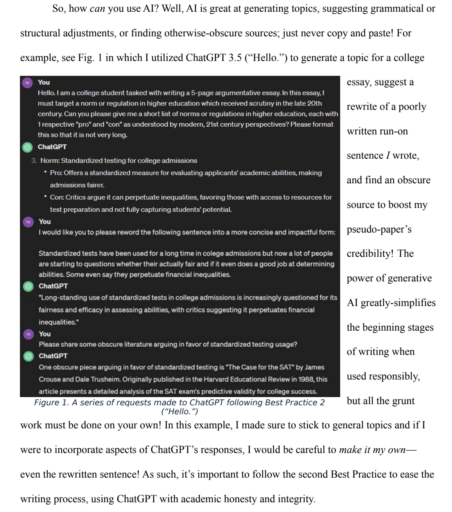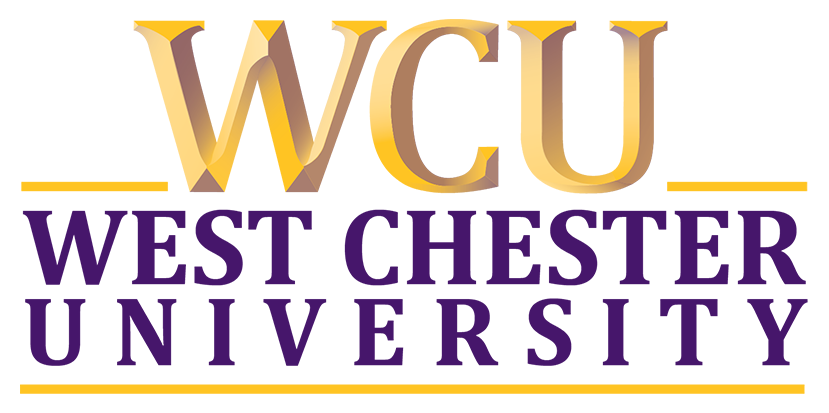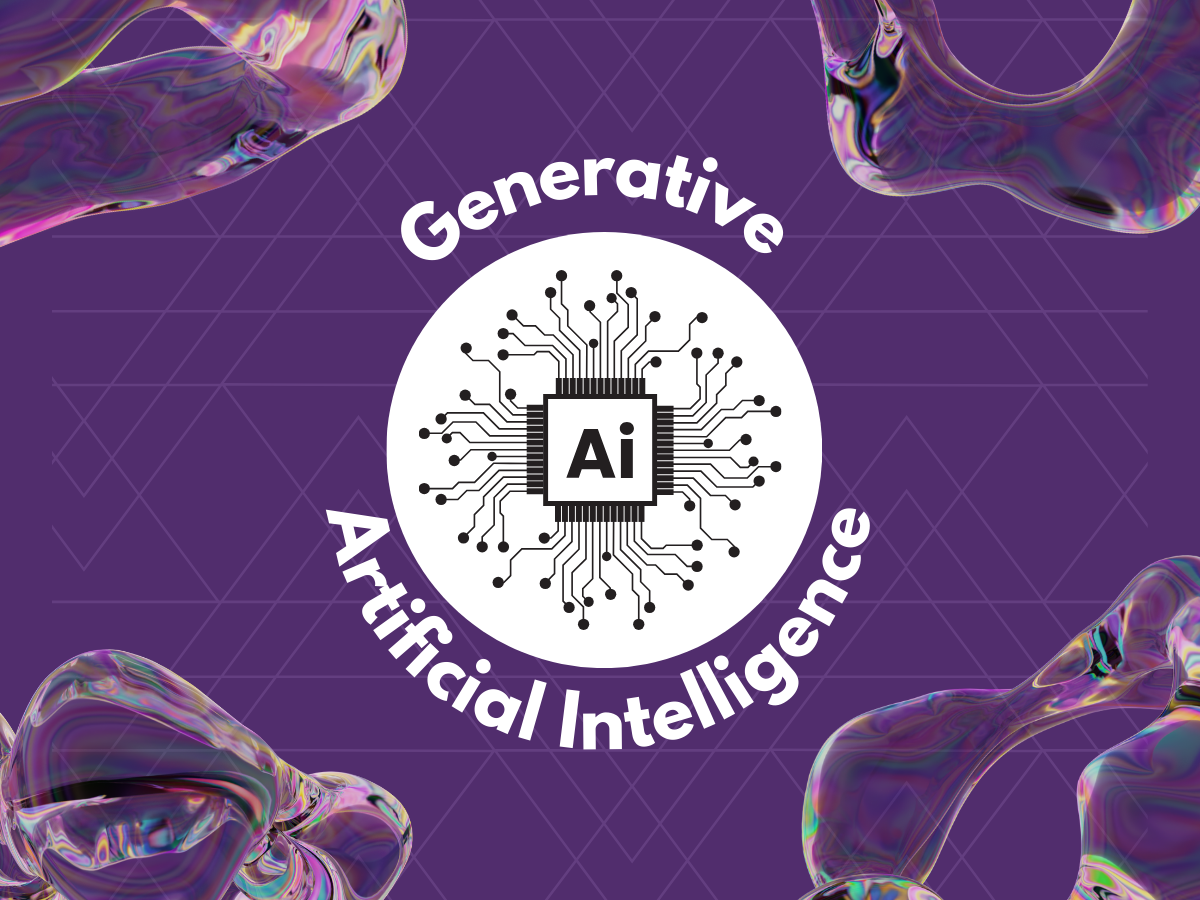When ChatGPT hit higher education and the world on November 30, 2022, I knew my General Education writing and writing emphasis classes would be hotbeds for AI use. Although I largely avoided the “AI issue” early on, when I had two sections of WRT 200 (Research Writing) in Spring 2024, I had to face this challenge to academic integrity and critical thinking.
First, I educated myself on how generative AI models work, like ChatGPT, Google Bard, Perplexity, etc. Second, I tried to decide how comfortable I was with AI “in” the classroom – do I teach AI for drafting work, do I ban AI outright. I couldn’t come up with a solution that felt right. So, I decided to put the onus on the students.
My WRT 200 has a three-part structure. The first project is based in naturalistic research, and the third project focuses on library research. The second assignment is the perfect spot for having students grapple with AI. The “source” project gets its name from the list of vetted sources on a specific topic that I choose, and everyone writes about; students focus on integrating sources into their writing (paraphrasing, quoting, documenting, etc.) rather than finding and evaluating sources (that’s the third project). This semester’s topic was generative AI.
To begin, I researched the most up-to-date, relevant articles on generative AI that I could find: Source Assignment Articles (remember these are from Spring 2024). Some of those articles are also included in WCU’s Navigating Digital Learning AI unit, so students also could earn a badge while learning about generative AI. I searched for other articles that spanned what I understood to be the “pro” and “cons” and general ethical considerations of AI.
Next, I had to figure out what I wanted students to do with all of this. How could I focus them on both learning about generative AI and deciding on when, how, or if to use it in their lives. I created an assignment where students were to become the experts on AI in their own area of interest. I put the responsibility on them not only to learn about what generative AI is and how it works, but also for them to advise others on the most ethical and practical ways to use AI.
I wrote up an assignment that asked students to use the “source” articles to create a Best Practices guide for a specific WCU audience.
The Assignment
Through Source Assignment Articles: AI Best Practices and your own thinking, develop 2-4 “best practices” that considers the pros and cons for using Artificial Intelligence (AI) ethically and responsibly for your choice of a specific audience related to WCU.
Format this research in a visually interesting way. The text should be well-researched, cited, and written in paragraph form, and the document should be formatted to appeal to the audience. You are writing a research-based paper and formatting a product that people will want to read.
- Choose your WCU-specific audience: Select a specific audience related to WCU where AI is becoming increasingly present. Write to those you know.
- Integrate citation and documentation requirements: Follow either MLA or APA documentation style; include quoted and paraphrased evidence from at least 2 sources from assigned class readings, 3 different methods for introducing that source information.
- Develop your “best practices” guide: Visually appealing, documented, guide with 2-4 specific, practical, and actionable best practices for your WCU-specific audience that address the identified risks and promote responsible AI use.
Samples/Examples: Google Sites Example, Formatted Document Example
You may also view the full WRT 200 Source Assignment Sheet. .
The Results
Most students put in an appropriate amount of work to produce a quality product, in terms of using sources responsibly, learning about generative AI, and integrating relevant material with their interests. A few students went over-and-above and made analysis and best practices very specific, generating examples of how to use AI responsibly. My thanks to Nick Gray for permission to use this excellent example and for putting together a great project.

This project revealed common issues in WRT 200 classes: Some students did not work effectively with sources (documentation style, introducing sources, paraphrasing vs quoting) and had standard problems of not addressing the specifics of the assignment (didn’t clearly indicate “best practices”). Some students had trouble relating AI to a specific audience. Normally, I don’t provide “sample papers,” and this project showed me the pros and cons of doing so. Some students use the provided format, organization, and main points (and some wording) and substituted in their audience; others used the example only as a loose framework. However, I feel confident on the purpose and goals of this version of the Source Assignment, and I plan to continue using it.
I suspect two students used AI to write the paper on AI. In both cases, there was no source support backing up ideas, and there were no examples of larger ideas. The organization was confusing or not connected with the stated outcomes, and there were illogical jumps in topics. My hope was that exploring the ethics of AI would further persuade students to “do their own work” and reach a deeper level of understanding, and I feel that goal was reached, though imperfectly.
Through this project, I understand AI a lot better than I used to. I am confident that my students understand AI a lot better, too. I feel good that I was suspicious of AI-based academic integrity issues in only 2 out of 40 projects. This project was a success overall, and assigning it gave me some ways to tweak it to be better the next time around.
In the future, I will update the articles (that’s a given), and I will re-evaluate providing sample assignments to students. I am considering asking for one standard format (instead of letting students decide), as I think the added “design” component may have distracted students from the “research writing” goals of the assignment. I will put more emphasis on establishing “best practice” statements as the foundation of the project.
As for AI as a topic, I am thrilled with this assignment. While I spent a great deal of time on the prep work (finding comprehensive, up-to-the minute sources that are relevant to college students), asking student to judge the value of generative AI for an audience that is important to them made the papers livelier and more interesting. Students, in general, provided personalized examples to complement the research, and they wrote to their audiences in a way that was practical and thoughtful.
I’m a teacher who doesn’t (can’t) sit still pedagogically, so I look forward to adjusting the project in the future. I can’t wait to see what’s new and exciting about AI. I can’t wait to see what students can teach me about how they finding meaning in their personal and academic lives. I welcome suggestions and ideas, dear readers, and hope to continue grappling in meaningful ways with my students and colleagues to make sense of our world.

